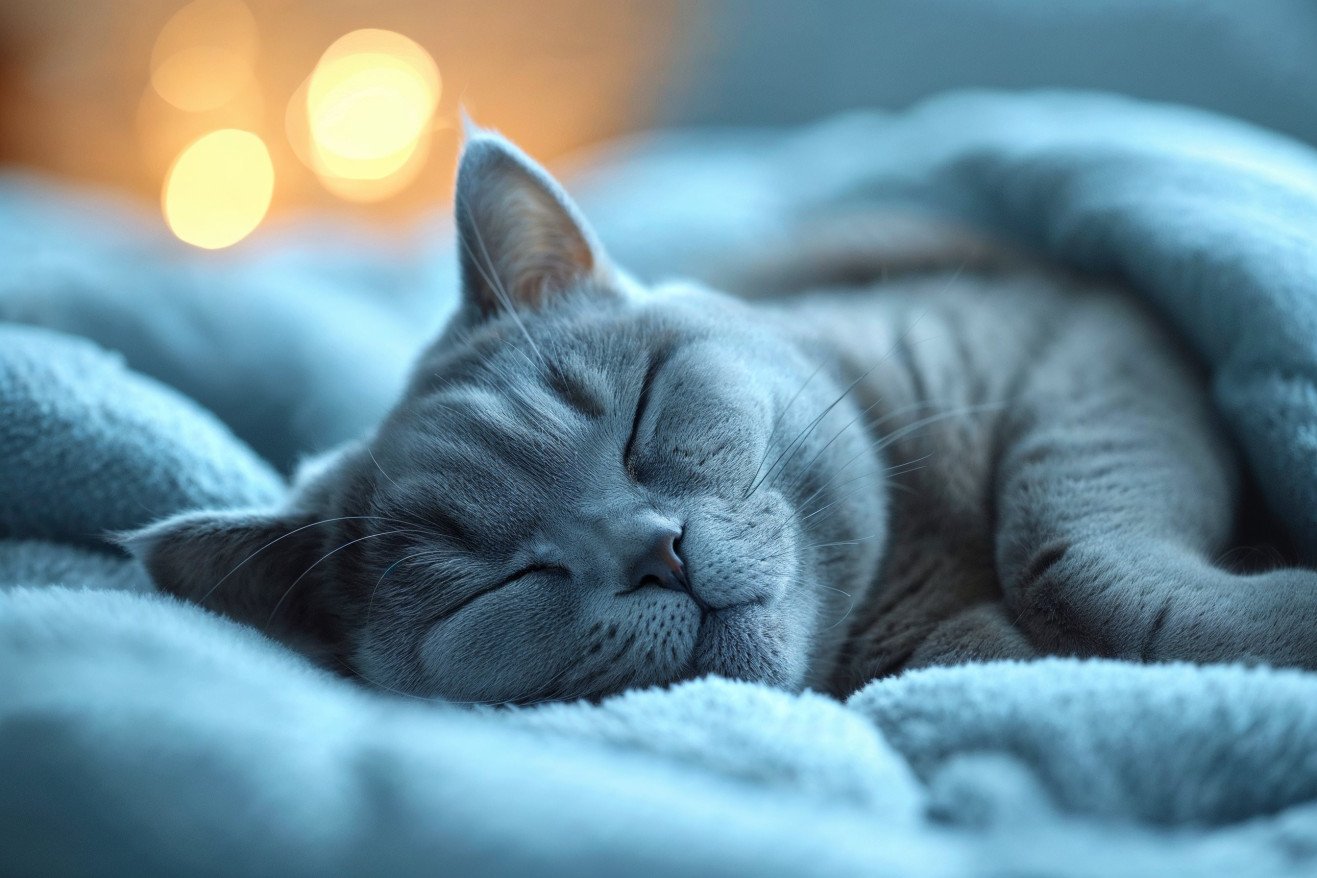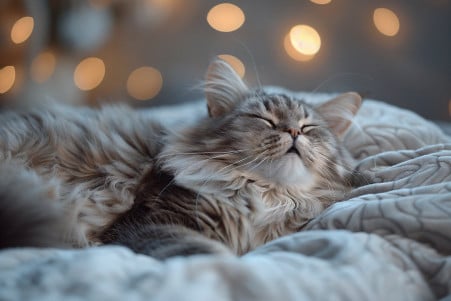Do Cats Dream Like Humans? Insights into Feline Sleep Patterns
31 January 2024

As you fall asleep and start to dream each night, have you ever wondered if your cat is doing the same thing? It turns out that cats do dream like humans. They have REM sleep, which is when dreams happen, and they have shown brain activity and behaviors that suggest dreaming, like moving their whiskers or paws.
While we can’t know exactly what they’re dreaming about, it’s likely that cats dream about things that happened to them while they were awake.
This article will take a deep dive into the fascinating world of interdisciplinary research on cat sleep and dreams. We will look at neurological and behavioral research that compares how cats and humans dream to find out what’s similar and different between the two species.
By reviewing the most recent research in animal behavior, sleep science, and cognitive psychology, we will give you a full picture of how animals like cats may experience their own dreams.
Do cats dream like humans?
What We Know About the Science of Cat Dreams
In the quest to understand the nature of dreams, scientists have explored the neurological basis of dreaming in a variety of species, including cats. While the brain activity of cats during sleep is similar to that of humans, especially during the REM phase of sleep that is associated with dreaming, there are also some important differences.
In humans, Edward F. Pace-Schott explains in The Neurobiology of Dreaming that dreaming activates the forebrain and limbic system, which are involved in emotional processing. Cats also show complex brain activity during REM sleep, which suggests that they may have rich dream lives.
The activation of these brain areas during REM sleep suggests that the content of cats’ dreams may be based on their daily experiences and their hardwired behaviors. Michel also observes in What does a cat dream about? that cats show a variety of motor behaviors during sleep, which suggests that the content of their dreams may be based on their instincts.
However, as Perrine M. Ruby explains in Experimental Research on Dreaming: State of the Art and Neuropsychoanalytic Perspectives, the current research is still in its early stages. The complexity of cat dreams is hard to untangle because we can’t directly access their subjective experiences. This lack of understanding has led to an intriguing scientific question about what cats really dream about.
Sleep Architecture and Dream Potential in Cats
Cats have a complex sleep architecture similar to that of humans, which includes both REM and non-REM sleep. An article in PubMed by N Kuwabara shows that cats have circadian and ultradian rhythms, with REM sleep happening in bursts throughout their total sleep time.
Meanwhile, a note on ResearchGate by Adrian Martinez indicates that these rhythms aren’t just tied to light-dark cycles, suggesting an internal sleep drive. Meanwhile, another article in PubMed shows that external factors, such as short light-dark cycles, have a big impact on cats’ sleep-wake cycles, causing them to wake up more often.
While the sleep-wake cycles of cats and humans are similar in that they both include REM sleep, which is often associated with dreaming, there are also differences between the two. In cats, REM sleep is more fragmented and less influenced by light than in humans.
This internal sleep architecture suggests that cats may have the potential for complex dream experiences that reflect their rich daily lives. The specific distribution and duration of sleep stages in cats could lead to a range of dream experiences and frequencies, providing a window into their dream world.
This knowledge not only helps explain the potential for cats to dream but also raises questions about the cognitive processes that happen during their sleep.
What Do Cats Dream About? Memory and Emotion in Cat Dreams
Like humans, cats are also thought to use the time they spend in the vulnerable state of sleep to consolidate memories, a process that is important for learning and emotional well-being. As one article in ScienceDirect points out, human sleep can even link memories together, a phenomenon that cats may also experience. This complex cognitive process could help shape the storylines of their dreams, connecting past memories with more recent ones.
Psych2Go explains that cats and humans have nearly identical brain regions that are responsible for emotions, which means that cats also have the neurological ability to process emotions while they are asleep. This also means that the emotions cats experience in their dreams are likely to be based on their real-life experiences.
Comparative research that is mentioned in PubMed shows that mammals, including cats, consolidate memory during sleep, which provides some insight into this process. While less is known about the specifics of the way the feline brain works, the fact that cats and humans have similar brain regions that are responsible for memory and emotion suggests that the dreams of cats are likely to be quite complex.
Not only does this help us understand the complexity of a cat’s experience while they are asleep, but it also helps us understand more about animal consciousness and cognition in general. This look into the feline mind at night also opens the door to future research that will explore how cats’ dreams are influenced by their sensory experiences.
Sensory Stimulation and Cat Dreams
When cats are in the midst of a dream, they may not be as far removed from the world around them as it seems. In fact, external sensory stimulation, including auditory and somatosensory stimulation, has been shown to have a profound impact on the dreams of cats.
For example, the study ‘The Effects of Sensory Stimulation on REM Sleep Duration’ by Giulio E. Lancioni found that sensory stimulation had a significant impact on the duration of REM sleep in cats, the stage of sleep during which dreams are most likely to occur.
This is supported by a study in the Journal of Sleep Research, which found that the thalamus processes sensory information during sleep, filtering out irrelevant information and allowing important information to be processed by the unconscious mind.
The fact that sensory information is processed during sleep suggests that cats may be able to integrate their real-life experiences into their dreams, just as humans do. As a result, the variety of dream experiences that cats have may be as diverse as the sensory experiences they have when they’re awake.
Understanding the complexity of cat dreams may help researchers better understand animal cognition and the enigmatic world of sleep, where sensory reality and dreams are inextricably linked.
What It All Means
In this exploration through the world of cat sleep and dreams, we have found a rich body of research that points to a commonality in the dream lives of cats and humans. From the neurological basis of REM sleep to the sensory input that shapes their dreams, the evidence is clear that cats dream.
The patterns of brain activity and the way cats act in their sleep are similar to humans, but the content of their dreams is still a mystery.
This commonality in the process of dreaming speaks to a shared cognitive ability among mammals, but the differences in the details of the dreams point to the individuality of each species’ experience. Knowing what cats dream about not only satisfies our curiosity but also helps us understand and appreciate these fascinating animals.
The mystery of animal minds and the importance of dreams in the lives of our animal companions make it important to continue to fund research in this area. As we wrap up our look at cat dreams, let’s keep our minds open to the possibilities of animal consciousness and keep working to find the knowledge that connects us to other species.


